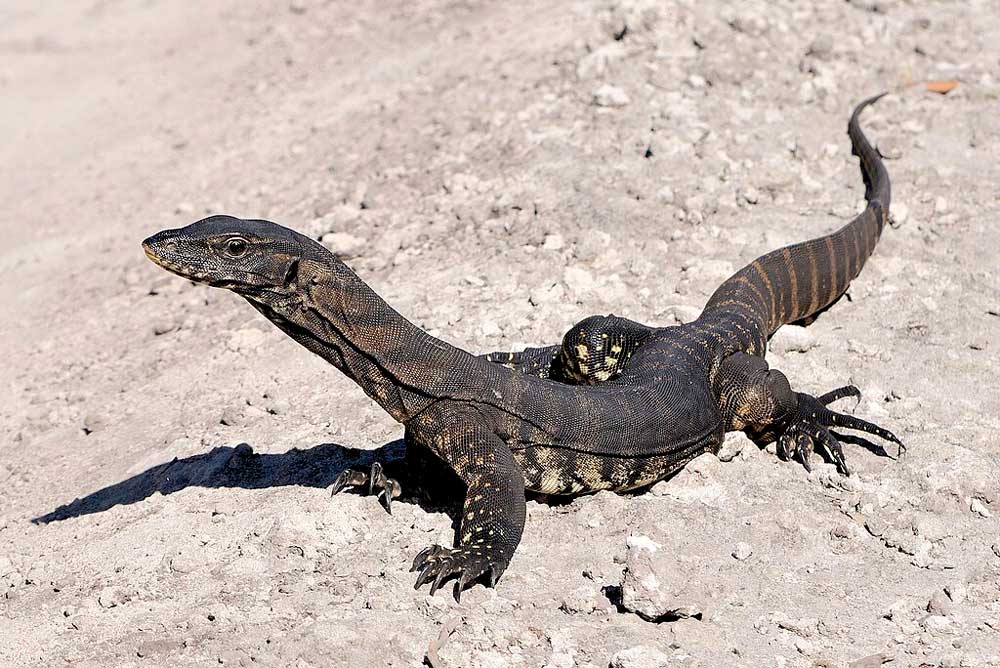Sheep farmers in Australia could benefit as the monitor lizards serve as clean up crews eating dead animal matter.
The heath goanna (Varanus rosenbergoi) is a natural scavenger that feeds on dead animal matter as a part of its diet. Sheep farmers in Australia could benefit as the monitor lizards serve as clean up crews eating dead animal matter, and in the process rid the landscape of blowfly maggots that are found on the carcasses. The beauty of the goanna is when it eats the dead flesh, they also eat the blowfly maggots. The adult flies lay their eggs on the backsides of sheep which then hatch into maggots that feed on the live sheep’s flesh.
Sheep infested with these maggots, called fly strike, contributes the death, loss of body condition and also act as vectors for other parasites and pathogens. These flies cost the Australian sheep farming industry an estimated $280 million every year in losses.
Researchers in Australia have published a report in the journal Ecology and Evolution that since the arrival of Europeans to Australia, the number of native scavenging mammals have been removed from the country’s varying ecosystems and the European red fox has been introduced. The researchers note that the study and contribution of squamate reptiles, which are the largest native terrestrial scavengers left, to scavenging functions is not well understood.
So they went about studying one of the reptiles, the heath goanna in Australia’s coastal mallee ecosystems. The researchers focused on how rat carcasses were removed for the landscape by these large lizards and how the removal of these rodents impacted the occurrence of the larvae of blowflies.
They compared the areas in which native scavengers (tasmanian devils and dingos) and invasive scavengers interacted and found that vertebrate scavenging contributes to the removal of the blowflies maggots and limits the flies from breeding in the carcasses. They determined that the blowflies maggots are limited where there are high densities of heath goannas and low densities of invasive mammals. They believe that a management strategy to restore the heath goannas will maximize what they call scavenging ecosystem services.
The complete paper, “Squamate scavenging services: Heath goannas (Varanus rosenbergi) support carcass removal and may suppress agriculturally damaging blowflies” can be read on the Ecology and Evolution website.



